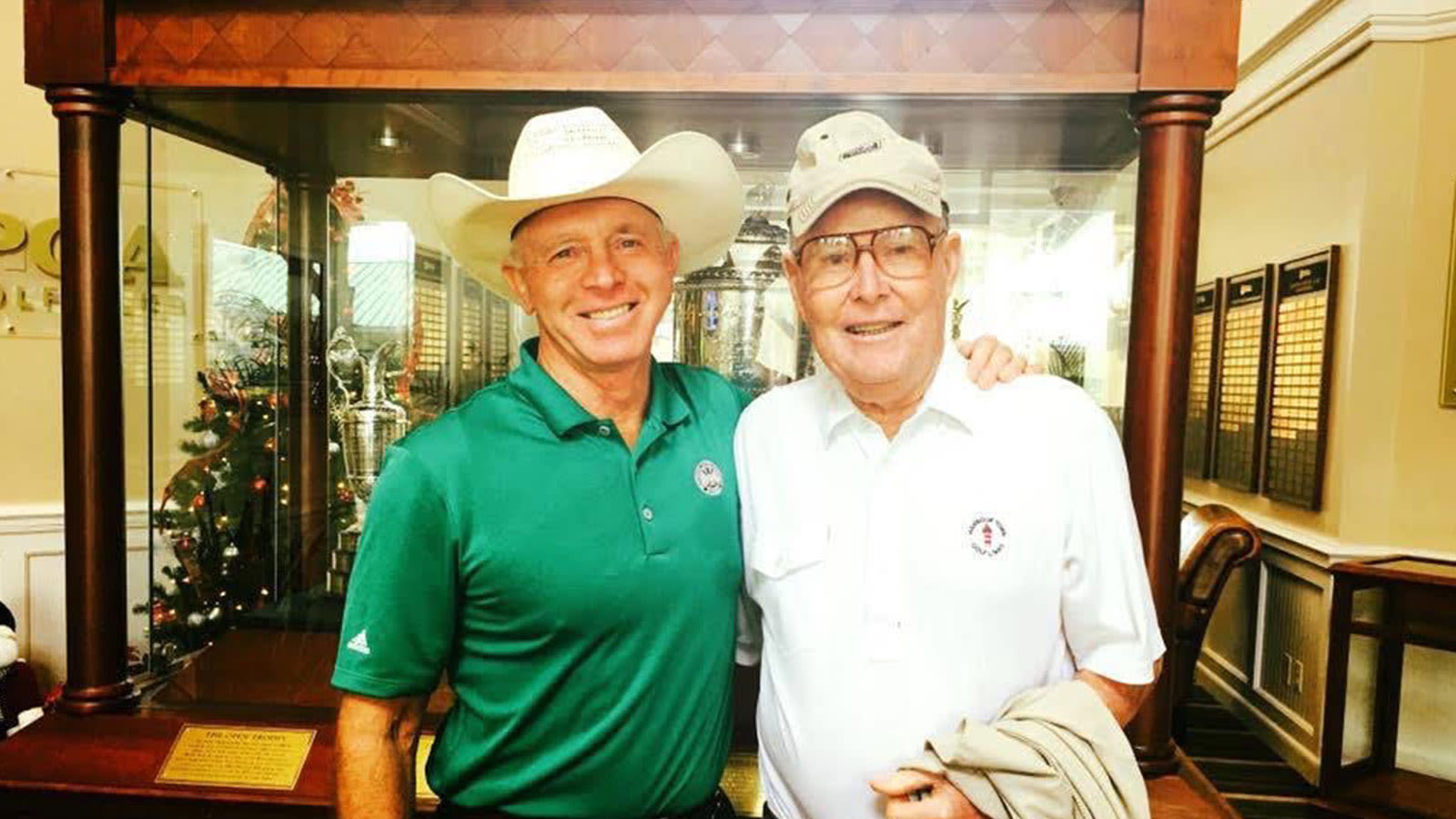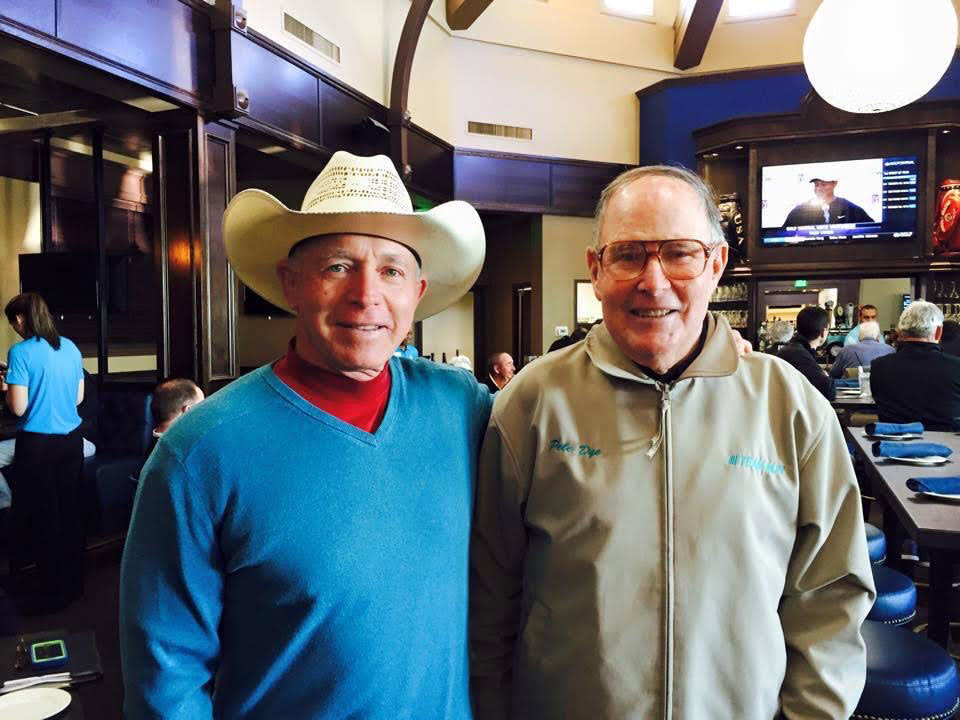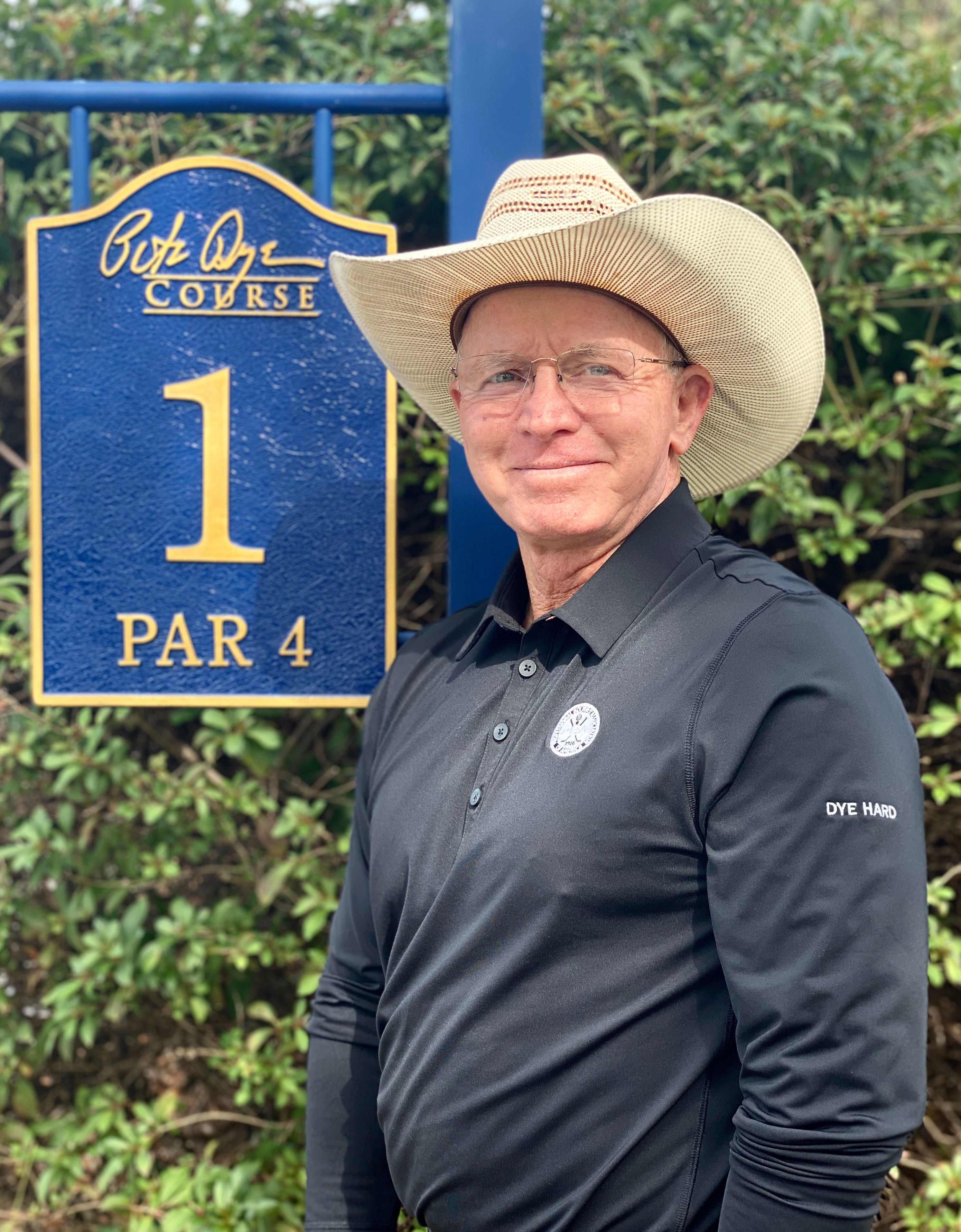Latest
A half-century friendship on turf: PGA Golf Club Director of Agronomy Dick Gray remembers Pete Dye
By Bob Denney, PGA Historian
Published on

Courtesy of Adriana Vizcaya/PGA Golf Club
Dick Gray never forgot Pete Dye eschewed being called a golf course “architect,” even though he was an honored member of the same elite “club” as one of his idols — Scotsman Donald Ross.
“I heard that Pete’s father once asked his son, what do mean ‘architect? ‘ You don’t have a degree in that.’ ” recalled Gray, 77, the Director of Agronomy at PGA Golf Club in Port St. Lucie, Florida. “Pete was an artist. He left footprints that nobody’s legs have enough room to reach.”
Gray and Dye had a 50-year friendship, a bond that continued through decades of change in the game and how the industry shaped golf facilities. When Gray got word that Dye passed away Jan. 9, at age 94, after a long battle with Alzheimer’s Disease, memories came gushing.
“I’m feeling today is my ‘American Pie, you know, the day the music died,’ ” said Gray, referring to Don McLean’s melancholic 1971 hit song. “Today, I feel it’s that kind of that day for all of golf.”
In March 1969, Gray was a 25-year-old, a graduate in botany from Wabash College in Crawfordsville, Indiana, and on his third job. It was a cool morning in March in Carmel, Indiana, when Gray met Pete Dye at Crooked Stick Golf Club — a facility that would ultimately host the 1991 PGA Championship.
“I had sprinklers running in a loop on several fairways,” said Gray. “I came upon one sprinkler that wasn’t working. About this time, I saw a guy walking to me. He was wearing khaki pants and a cloth shirt.
“If you keep running the water, you will run out in August,” said Dye.
“If I don’t water now, I won’t be here in August,” said Gray.
The twosome became quick friends. Gray would be mentored by a man who would go on to change the face of golf. Dye’s signature is more than 100 courses worldwide, and in 2008, was inducted into the World Golf Hall of Fame.

Dick Gray and Pete Dye at PGA Golf Club's Taplow Pub. (Courtesy of Adriana Vizcaya/PGA Golf Club)
Dye-designed courses have hosted 13 overall major championships conducted among the PGA of America, USGA, PGA Tour, LPGA and PGA Tour Champions. This September, Dye’s challenging Whistling Straits in Kohler, Wisconsin, follows the Ocean Course in Kiawah Island, South Carolina (1991) in hosting a Ryder Cup.
Gray and Dye would continue to intersect through the years. When Gray landed a superintendent post in the 1980s at Loblolly Pines in Hobe Sound, Florida, it came after a round at Seminole Golf Club in Juno Beach.
“I didn’t know that I was being interviewed while having lunch with Pete and the course owner, and playing golf,” said Gray. “It was good for me that I was caught by surprise.”
In 2013, Gray was named Director of Agronomy at PGA Golf Club and reunited with Dye to get his perspective on renovating the Dye Course. Gray asked his grounds crew at PGA Golf Club to pick a nickname they would like imprinted on their black work shirts. They chose “DYE HARD.”

Dick Gray poses for a portrait in his "DYE HARD" shirt. (Bob Denney/PGA Historian)
When Dye designed a golf course, said Gray, “he left a signature.” Dye’s late wife, Alice, left her own indelible mark in the industry as her husband’s partner in the family design firm. Alice passed away last February at age 91. She was the 2004 PGA First Lady of Golf and the first woman member of the PGA of America Board of Directors.
“Pete and Alice were amateurs, and not in the golf course business,” said Gray. “Golf course design was their passion. It wasn’t a business to them. They played by ear, worked with what they saw, decided what it should look like and were totally fearless.”
Gray said that Dye instilled confidence in him.
“If it’s a good strategy, Pete used to say, ‘just do it,’” said Gray. “For so many guys, he gave us confidence.
“All of the artwork that came in the last 20 years by others was influenced by Pete, whether they worked with him or met him; had a connection to him or would meet later.
“If not for Pete Dye, we would still have rectilinear tees, round greens, a bunker left, a bunker right and trees down both sides of the fairways. Pete didn’t see golf that way. He broke the code and said, ‘This is how I see it.’
“Pete didn’t think outside the box; he was outside the box.”
Dick Gray said he often spends time at twilight on The Dye Course at PGA Golf Club. He thinks about those days when he and Dye toured the course.
“I take a lot of pictures of the course and smile about what I remember that Pete did to enhance something in places that I would never have imagined,” said Gray. “What he and Alice have left will be in the ground for all time.”
